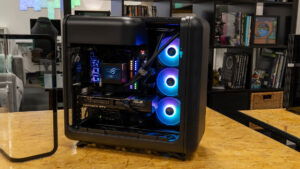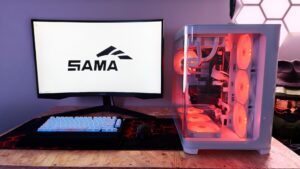As content creation becomes increasingly accessible, the Roland Bridge Cast One aims to simplify your setup with a sleek, feature-rich personal mixer.
In recent years, the personal mixer for content creators has become a staple, starting with the original GoXLR and followed by devices from RØDE, Mackie, BEACN and, of course, Roland. More recently, companies have aimed to distill the functionality of these larger mixers into compact devices for users who don’t need extra faders and buttons, or simply prefer to save space on their desks. Roland’s entry in this category, the Bridge Cast One, delivers a unique set of features while maintaining a minimal footprint.
Inside the box, the Bridge Cast One includes the mixer itself, a USB-C to USB-C cable, and documentation. For input and output, it features a single XLR input and three 3.5mm jacks: one for a headset (which also serves as the headphone output if you’re not using a headset), one for auxiliary input, and one for line out. A USB-C port handles both power and PC connectivity. Two physical toggles allow users to switch between PC or console connection via USB, and between Aux or Line modes for game effects.

On the Bridge Cast One’s face, there is a large dial to control the levels of up to three sources. Pressing down on the dial allows users to switch between sources, and mute buttons below it offer quick control. While labelled Mic, Chat and Game by default, the Chat and Game inputs can be configured to other sources—such as music or system audio—through the software. The LED ring surrounding the dial and buttons not only enhances usability but also adds a stylish aesthetic, giving the Bridge Cast One a polished look on your desk.
“Roland’s entry in this category, the Bridge Cast One, delivers a unique set of features while maintaining a minimal footprint.”
To the right of the dial are a headphone volume knob and two additional buttons: Voice Transformer and Game Effects. There is also a 48V phantom power indicator located in the top-left corner. This can be activated for condenser microphones either by holding the Game button on the unit or via the companion app.
Connecting the device is quick and straightforward. For a PC setup, you only need to connect the USB-C cable and plug in your microphone or headset to the Bridge Cast One. You can further enhance your production by connecting a mobile device—perhaps with a soundboard app—to the Aux jack.

That said, I encountered a minor issue with the Bridge Cast app initially failing to detect the new unit, as it was still searching for the original Bridge Cast, which I had tested previously. Eventually, it prompted a firmware update for the Bridge Cast One, and from that point forward, everything worked smoothly.
“The mic setup process on the Bridge Cast One is a unique take on automation.”
In the Bridge Cast app, you begin with a mixer view that shows your audio levels and allows you to adjust submixes by setting different volumes for your personal and stream mixes. By default, these mixes are linked, but you can unlink them to assign separate values. You can also customize the LED colours for each source, adding a touch of personalization. From the dropdown menu at each source, you can assign what each input represents and decide what the buttons below will do. While they are set to mute by default, they can also trigger voice transformations or even send MIDI events.
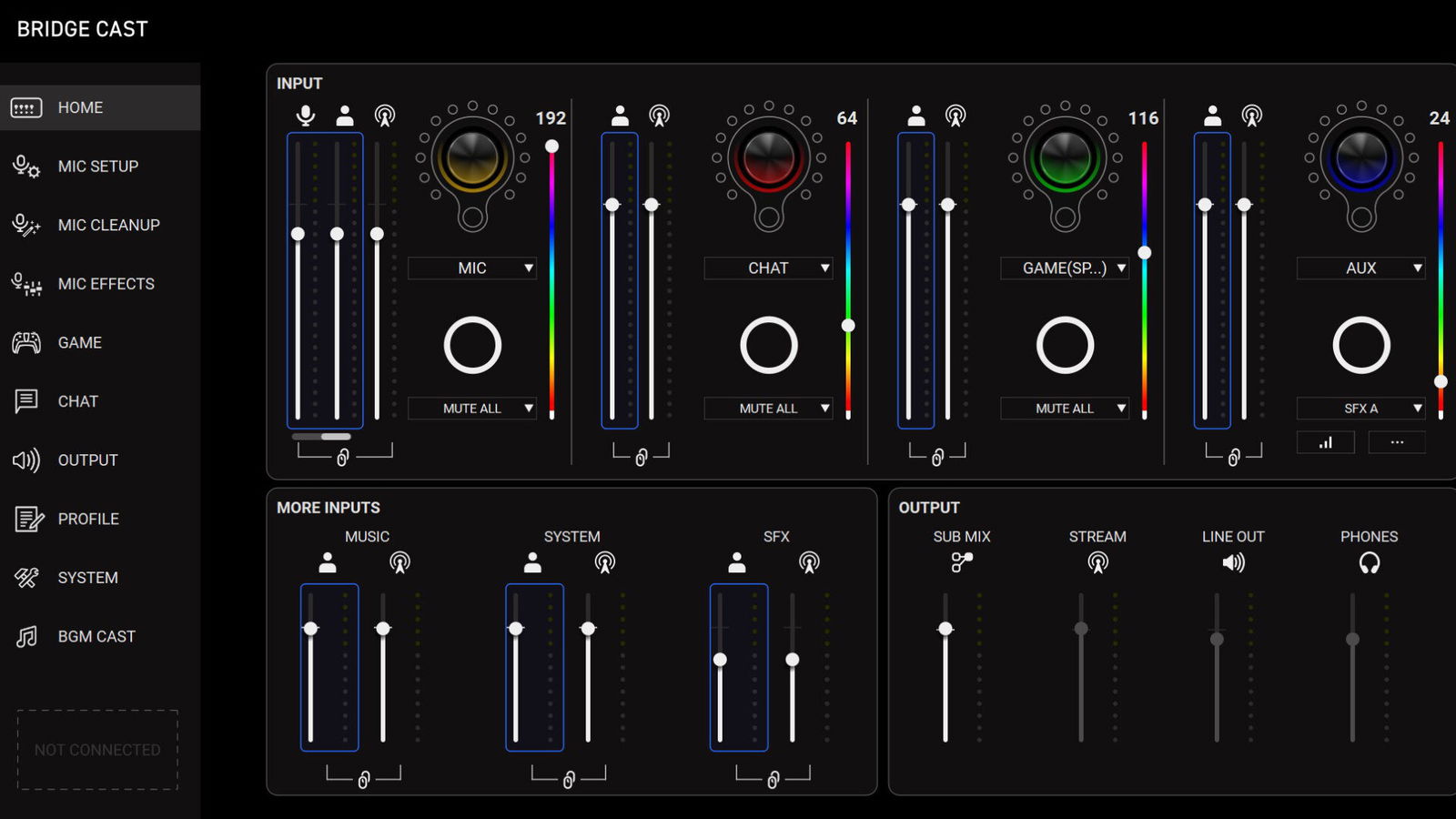
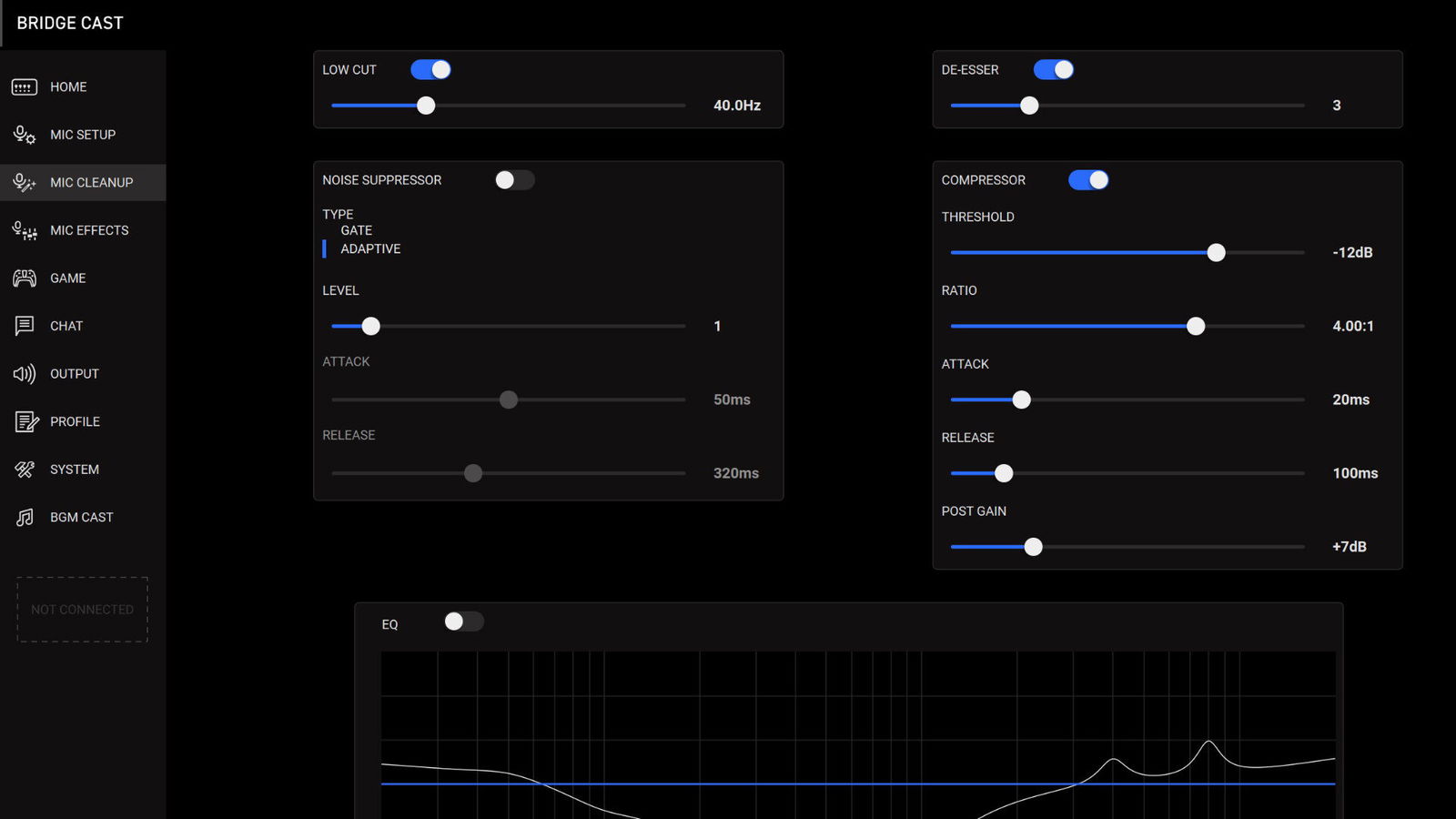
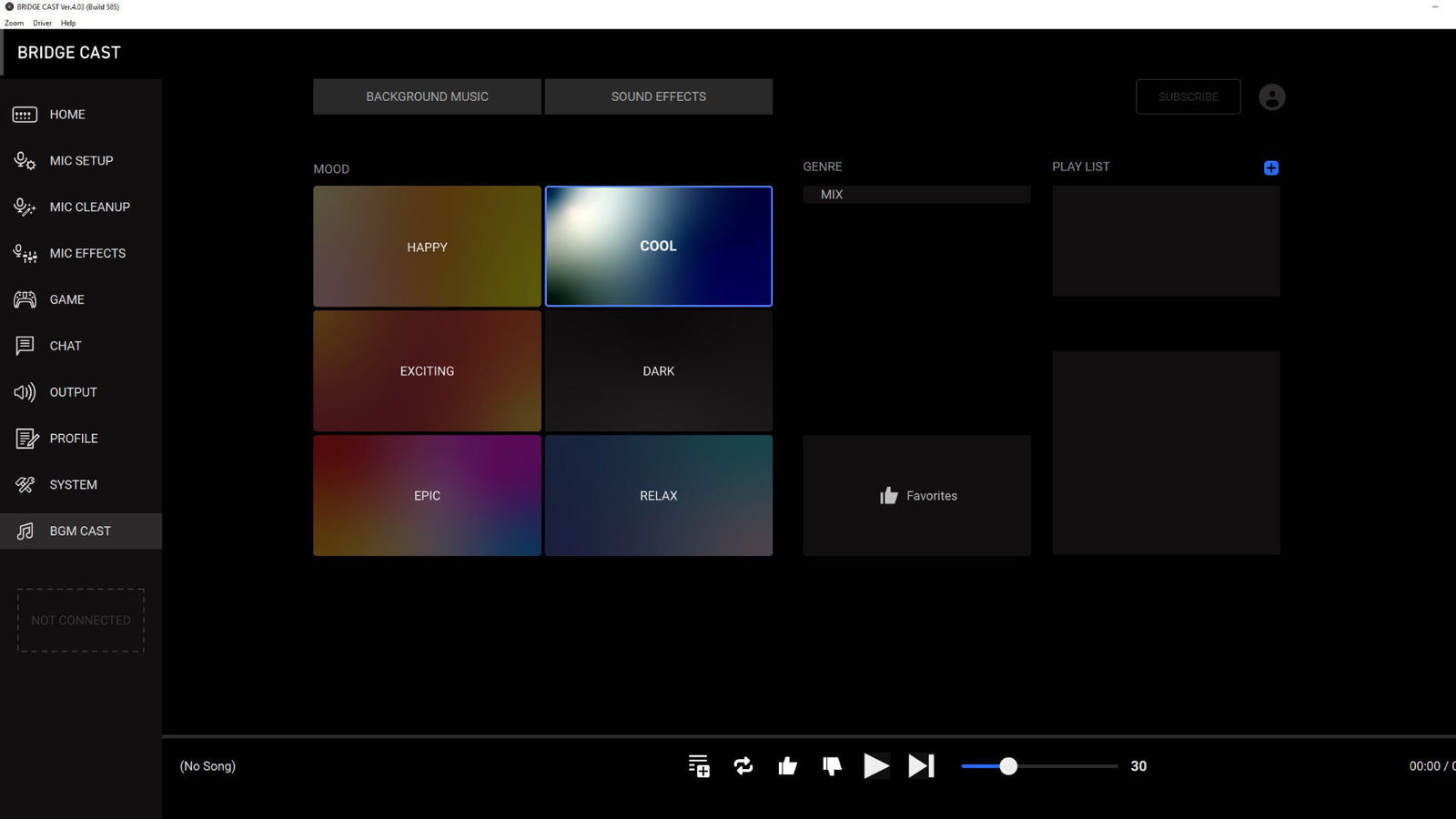
The mic setup process on the Bridge Cast One is a unique take on automation. It walks you through setup by asking you to stay silent while it captures ambient sound, then speak normally, and finally speak softly. This process is used to automatically configure your mic levels and cleanup settings. Among these is a noise suppression tool, which offers two modes: a noise gate, which cuts off sound below a certain threshold, and an adaptive mode. While not all mixers offer adaptive noise suppression, in this case, the results were mixed.
The adaptive setting did a fair job of removing background noise, but it noticeably altered my vocals, making my Shure SM7D sound more like a basic headset mic. In a quieter room, the noise gate should be more than sufficient, and the adaptive mode may yield better results. However, in noisier environments, I’d recommend using a third-party noise suppressor such as NVIDIA’s, applied through your streaming software or digital audio workstation (DAW).
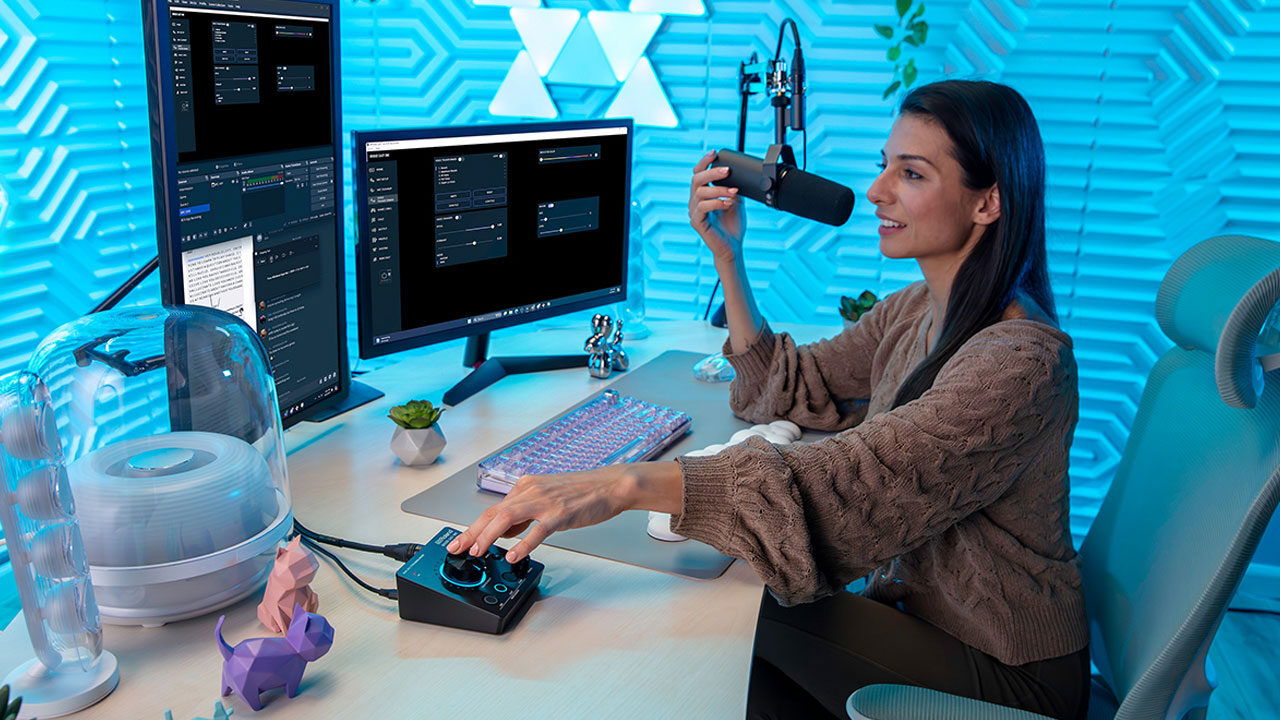
The Voice Transformer and Game Effects on the Roland Bridge Cast One are audio settings that can be toggled on and off. Both offer presets out of the box, but can also be fine-tuned to suit your preferences. While you won’t be able to create a wide range of vocal characters, you can still adjust reverb and pitch. It would have been nice to see more options here to match what Røde offers with its voice transformation features—or at least reduce the need for third-party software like Voicemod to expand your selection.
“The Bridge Cast One delivers clean and natural mic passthrough that doesn’t sound overly processed or digitized.”
Game Effects can be configured to create virtual surround sound and apply specific EQ settings depending on the game being played. However, this feels like a niche feature, as game audio is often ducked and typically broadcasts cleanly without added processing. Chat audio has similar controls, with compression being the primary tweakable setting.
One of Roland’s most distinctive features is its cloud service, which offers access to music and sound effects through a paid membership. From here, you can select background music or assign sound effects to buttons for quick playback during your stream. While free options are limited, this could be useful for creators who don’t already have a soundboard solution in place.
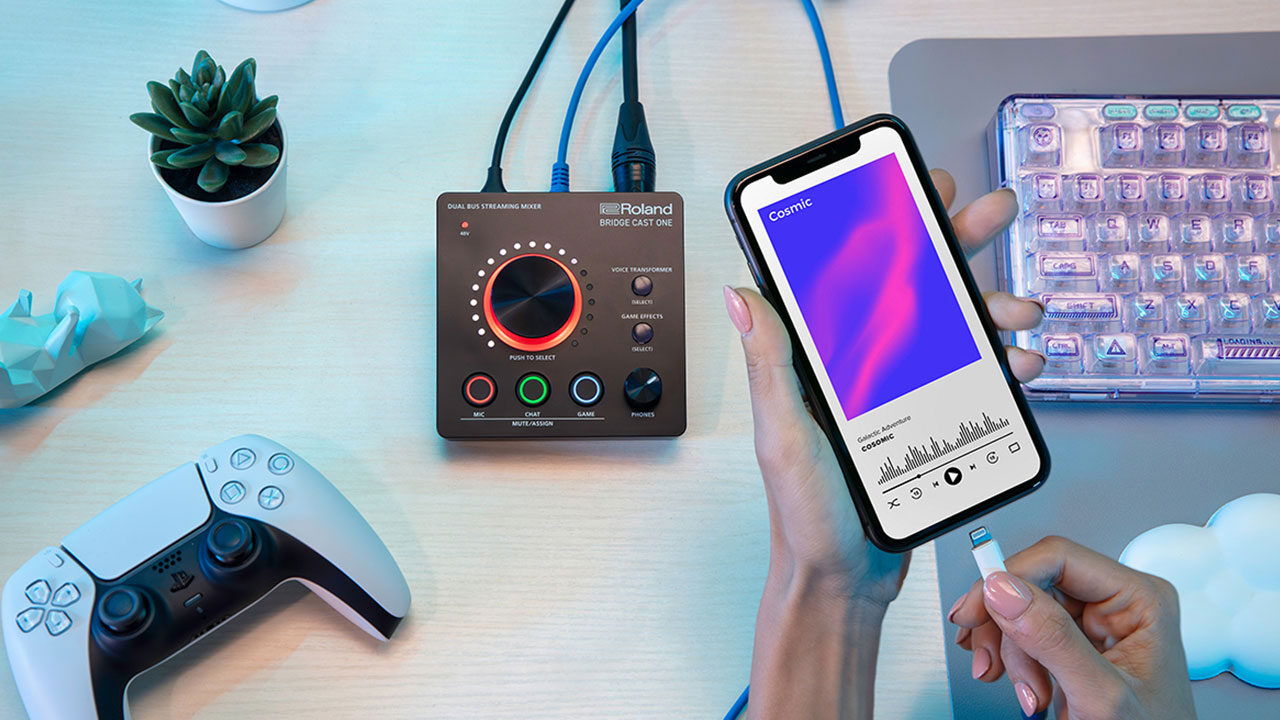
As for the audio quality itself, the Bridge Cast One delivers clean and natural mic passthrough that doesn’t sound overly processed or digitized. The 10-band EQ included in the app gives users a good deal of control over vocal tone and clarity. As expected from a company with Roland’s pedigree, the core audio performance is excellent. The only weak point remains the adaptive noise suppression, but it’s easily addressed with third-party tools if needed.
At $179.99 USD, the Roland Bridge Cast One comes in significantly cheaper than full-sized mixers, whether from Roland or other brands. It offers more than many compact audio interfaces, including broader source control and a few fun extras. The price is comparable to similar (but older) devices from competing brands, yet it brings a little more to the table. While the software doesn’t quite have the polish of some other solutions, this is a strong entry point for anyone with a partially built setup who wants to integrate an XLR microphone. It’s a sharp-looking device that gets the job done. That said, if you’re looking for more advanced processing features, there are stronger options available.


